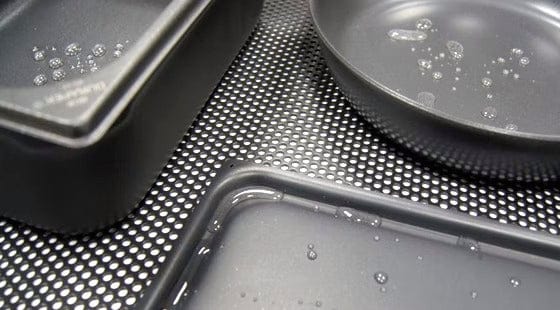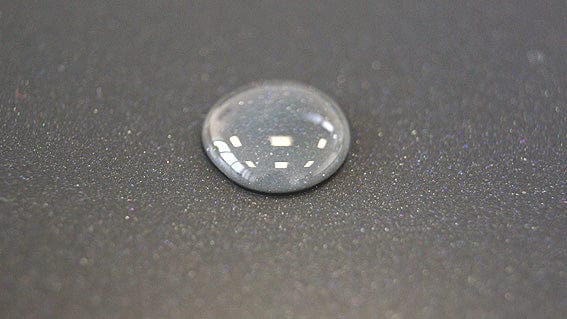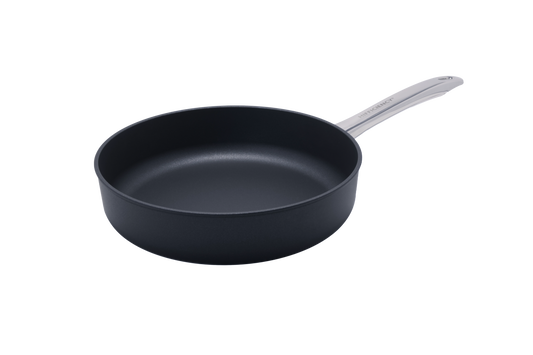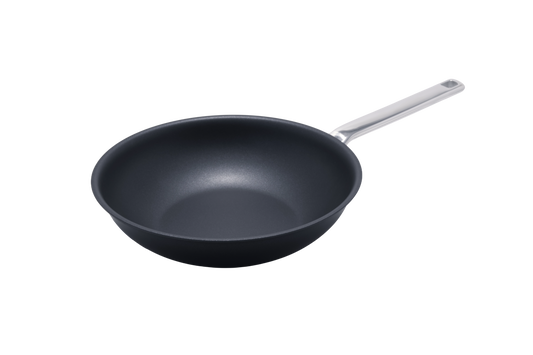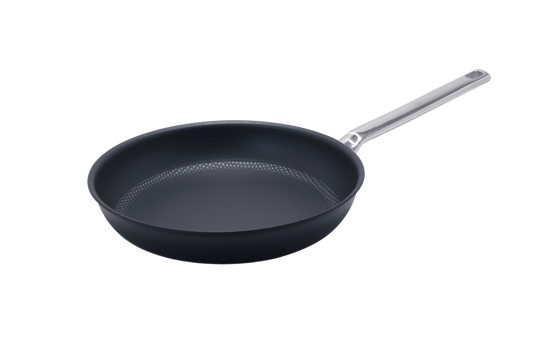Teflon-free pans
What exactly is Teflon?
Teflon® is a trademark of DuPont and refers to materials made of or containing fluoropolymers. The most widely used fluoropolymer is PTFE (polytetrafluoropolymer), which was discovered in 1938 by chemist Roy Plunkett in DuPont's laboratories. PTFE is characterized by its chemical resistance and non-stick properties, which led to the development of the first "Teflon pan" approximately 20 years after its discovery. A "Teflon pan" is a pan where the metal base, usually steel, aluminum, or copper, is coated with a layer containing or consisting of fluoropolymers, particularly PTFE. Colloquially, "Teflon" is often used synonymously with fluoropolymers. "Teflon coating" is often understood to mean non-stick coating in general.
Besides advantages such as non-stick effect, chemical resistance, and low friction coefficients, fluoropolymers/Teflon have the following disadvantages:
Toxic substances such as PFOA or PFAS (perfluorooctanoic acid and perfluorinated alkyl substances) can be formed during production and, in some cases, during use. Fluoropolymers are relatively soft and have low wear resistance. Their maximum temperature resistance is only 260°C, and their melting point is 320°C.
Teflon-free
Are Teflon pans toxic?
Since Teflon is relatively soft at room temperature and especially at elevated temperatures, and because its strong non-stick properties prevent it from adhering to metallic surfaces, Teflon coatings are always used in combination with other materials and fillers. Most commonly used coatings consist of two or three layers, with only the top layer containing a high concentration of PTFE or other fluoropolymers. The underlying layers consist of resins that are significantly harder than the fluoropolymers and adhere to the metal substrate.
When considering toxicity, the entire coating must be examined, not just the top layer, as the underlying layers sometimes contain substances that are chemically and thermally less stable than the fluoropolymers (but cheaper). In most cases, the resins used are not resistant to hot water and alkalis, which can lead to blistering and peeling of such "Teflon coatings" after a certain period.
Teflon itself forms toxic substances at temperatures just above 200°C, which can kill birds like budgies in the kitchen. Only at temperatures above 360°C does thermal decomposition begin, producing substances that can also be dangerous to humans. The resulting symptoms are flu-like and are sometimes called Teflon fever. Smokers are particularly susceptible.
A Teflon coating is not inherently toxic, but overheating should be avoided whenever possible. High-heat frying or even grilling can easily reach temperatures where Teflon is no longer suitable. Pans can reach temperatures of 400°C and higher on the stovetop if you're not careful.
Additionally, the production and processing of fluoropolymers/Teflon generates substances (PFAS) that are classified as harmful. The limit values for these substances may be lowered so significantly in the EU in the coming years that the production of Teflon coatings will practically no longer be possible.
OBSIDIAN SHELL
The large contact angle of the water droplet demonstrates the superior OBSIDIAN SHELL® non-stick effect!
Teflon-free
Alternatives to Teflon
Teflon-coated pans are the most commonly used, especially in the lower price ranges. However, they are now usually advertised using other terms, such as "Titan" or "Lotan." These are metal oxide spray coatings consisting primarily of aluminum oxide (Al₂O₃) and some titanium dioxide (TiO₂). This forms a hard base layer onto which a standard Teflon coating is then applied. So, not a true alternative.
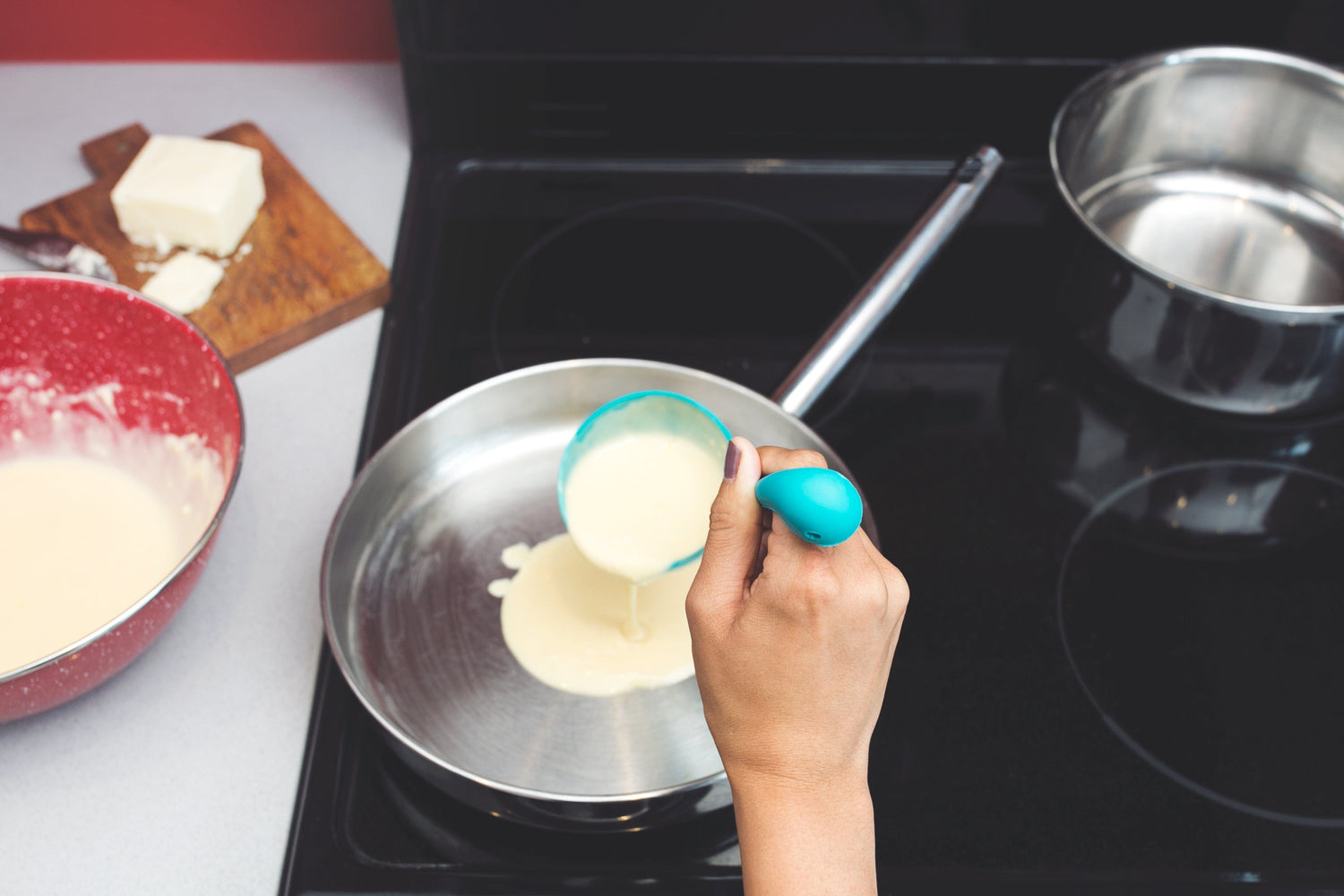
Uncoated aluminum pan
Aluminum can dissolve in contact with hot oils or alkalis and then enter food and thus the body, where it is classified as carcinogenic. Therefore, uncoated aluminum cookware is not an alternative.
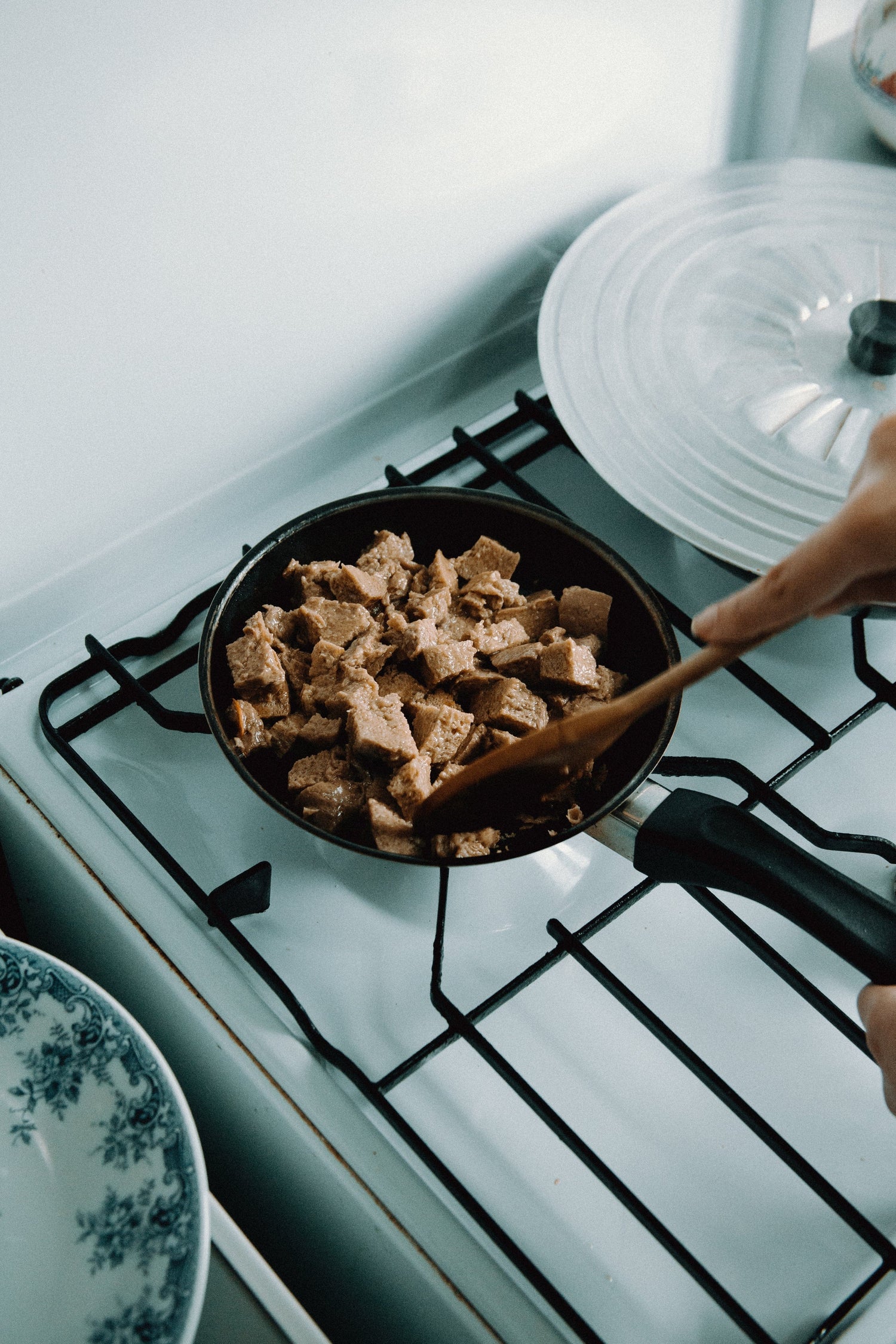
Uncoated steel pan
While a healthy solution in principle, it's not very practical, as steel lacks non-stick properties and corrodes very quickly. Seasoning with oils significantly improves the non-stick effect, but not corrosion resistance. Furthermore, seasoning with oils at high temperatures produces toxic substances that may be carcinogenic.
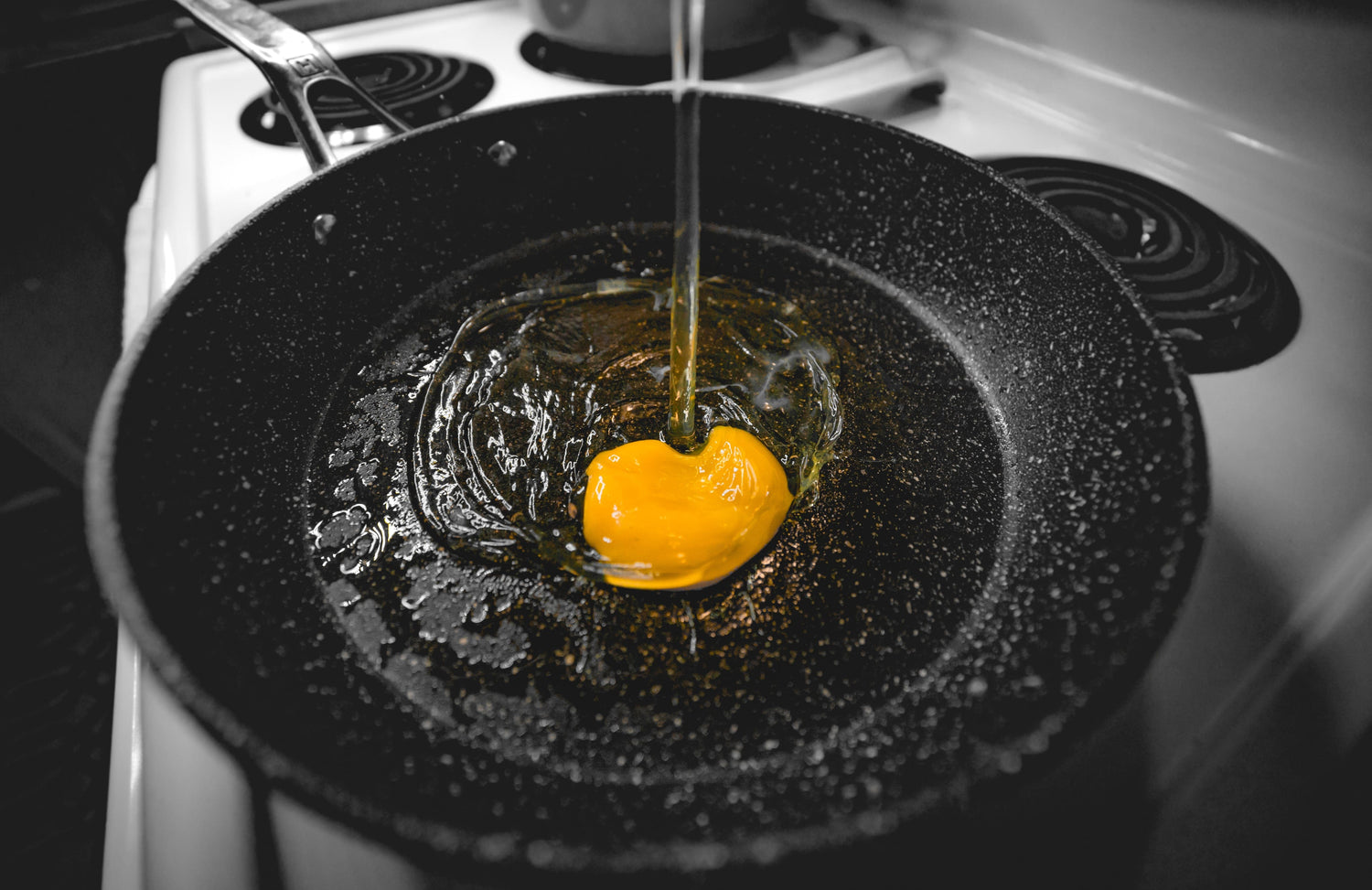
Uncoated stainless steel pan
In principle a healthy solution, but with very poor non-stick properties. Practically unsuitable for many foods. The nickel content can cause problems for allergy sufferers.
Teflon-free
Coatings compared

steel enamel
Enameled steel cookware is a healthy alternative, but it has a very poor non-stick effect and is usually very heavy. The enamel is applied wet or as a powder to the iron base and then fired at approximately 850°C. This process also alters the properties of the base material itself. The glass-like coating is particularly hard, but brittle and can chip easily. In professional use, enameled steel GN containers ("granite enamel") are not sufficiently corrosion-resistant and can even cause surface rust in ovens. Due to their high weight, they also heat up slowly, consume more energy, and are difficult to regulate. Enameling is only possible on carbon steel, also known as carbon steel, i.e., steel that rusts. Enameling cannot be done on stainless steel or aluminum.

Ceramic coatings (Solgel)
Coatings with names like "Ceradur" and "Torlon" are sprayed on as wet-chemical (toxic) solutions and then baked on at approximately 200°C. The coating is based on a silan sol that gels during heat treatment, forming a glass-like network that is quite hard and very brittle. The coatings must not be applied too thickly, otherwise cracks will form. The non-stick effect is achieved through a top layer that is not very wear-resistant and is generally not very durable. These coatings also contain various hazardous substances and usually have a short lifespan.
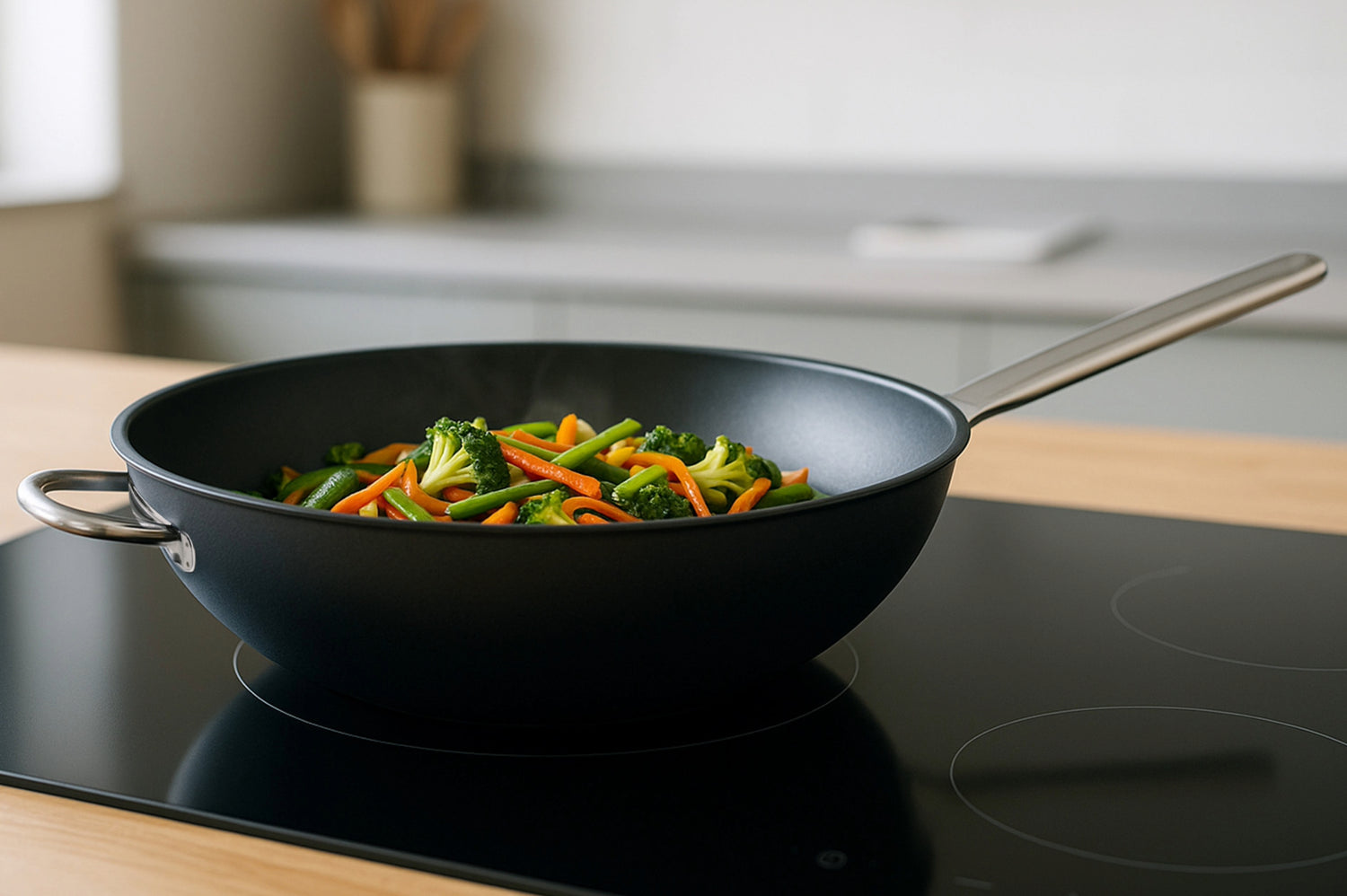
OBSIDIAN SHELL®
This innovative, patented mineral coating is applied as a powder and fused at high temperature. The coating forms a SiO2 framework and, while not as hard as enameled steel, is significantly harder than Teflon coatings. Its advantages include the ability to be applied to stainless steel and aluminum, and its non-stick properties are at least as good as those of Teflon/PTFE. However, its heat conductivity is considerably better than PTFE, resulting in a crispy surface and excellent browning when frying and grilling. This coating is Teflon-free, and no toxic solvents (VOCs) are used in the coating process. Tests conducted by an independent institute have shown that OBSIDIAN SHELL® emits virtually no pollutants. Its temperature resistance is up to 450°C, making it suitable for high-heat frying and grilling. It is also dishwasher safe.
Teflon-free
Conclusion: Teflon-free pans
When cooking, baking, and grilling, it's essential to ensure that temperatures aren't too high. Besides the cookware, the oils used and the food itself are also sensitive to temperature and can produce and release toxic substances at excessively high temperatures. For example, cold-pressed, extra virgin olive oil is only heat-resistant up to about 140°C, and butter up to about 180°C. Potatoes should also not be fried or deep-fried above 180°C. The substances that form at excessively high temperatures can be carcinogenic, sometimes even at lower temperatures than where Teflon/PTFE becomes dangerous. As soon as oil starts to smoke heavily, the temperature should be reduced immediately, and the smoking oil (especially olive oil) should be discarded. Therefore, only use filtered and refined oils suitable for high temperatures when frying. Add other oils at the very end for flavor. We recommend pans with an OBSIDIAN SHELL® coating, which is a thousand times better than Teflon.


